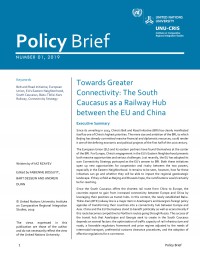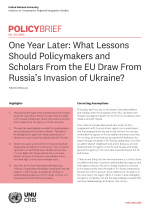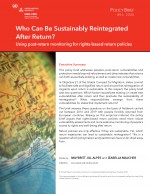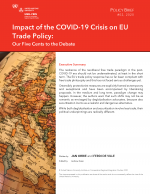Towards Greater Connectivity: The South Caucasus as a Railway Hub between the EU and China

Since its unveiling in 2013, China’s Belt and Road Initiative (BRI) has clearly manifested itself as one of China’s highest priorities. The mere size and ambition of the BRI, to which Beijing has already committed massive financial and diplomatic resources, could render it one of the defining economic and political projects of the first half of the 21st century.
The European Union (EU) and its eastern partners have found themselves at the center of the BRI. For Europe, China’s engagement in the EU’s Eastern Neighborhood presents both massive opportunities and serious challenges. Just recently, the EU has adopted its own Connectivity Strategy portrayed as the EU’s answer to BRI. Both these initiatives open up new opportunities for cooperation and rivalry between the two powers, especially in the Eastern Neighborhood. It remains to be seen, however, how far these initiatives can go and whether they will be able to impact the regional geostrategic landscape. If they unfold as Beijing and Brussels hope, the ramifications would certainly be far-reaching.
Since the South Caucasus offers the shortest rail route from China to Europe, the countries expect to gain from increased connectivity between Europe and China by leveraging their positions as transit hubs. In this context, the newly established Baku-Tbilisi-Kars (BTK) railway line is a major item in Azerbaijan’s and Georgia’s foreign policy agendas of transforming their countries into a connectivity hub between Europe and Asia. China and the EU themselves stand to benefit politically as well as economically if this route becomes competitive to Northern routes going through Russia. The success of the transit hub that Azerbaijan and Georgia seek to create in the South Caucasus depends on several factors: the optimization of traffic capacity of rail infrastructure and roads, a favorable regulatory framework and price regime adjusted to the needs of intermodal transport, preferential customs clearance procedures, and the adoption of effective regulations for e-commerce.




